Expertise and Equipment
Organic Synthesis
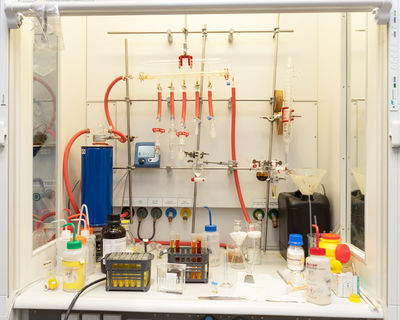
Organic synthesis techniques are readily available within our lab for hit optimization and the generation of rationally designed compound libraries. Utilizing chemical optimization, we aim at improving ligand efficacy, selectivity, and pharmacological properties. We often start of validated hits, emerging, e.g. from screening campaigns within our RASPELD screening unit. We employ conventional methods, as well as microwave reactions and H-Cube (hydrogenations in a flow-reactor), flash-chromatography, and HPLC for compound purification, as well as LC/MS, and TLC-MS for further analytical support within our laboratory. NMR and IR techniques add up to the repertoire and are available nearby at the site.
Structure-based ligand design
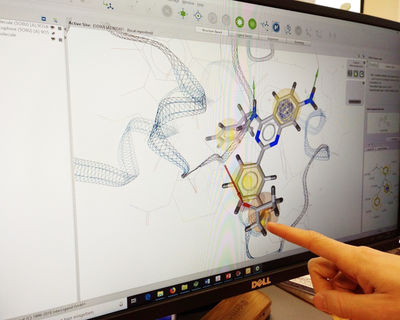
Here, we aim at the design and development of small organic molecules to perturb target proteins. Our approach is to work with given structural information of ligand binding sites, e.g. from X-ray structures or homology models. A closer look into those pockets will help to identify essential characteristics and can reveal addressable interactions. This structural-biased view guides the design of small molecule libraries, which can be further evaluated in silico with docking experiments to filter beneficial moieties.
Results from follow-up experiments, such as activity-based or direct binding assays as well as protein X-ray crystallography will give new insights into the structure-activity relationship (SAR) of those initially designed molecules, and there contributes to the iterative process of structure-based ligand design.
Biochemical and Cellular Screening
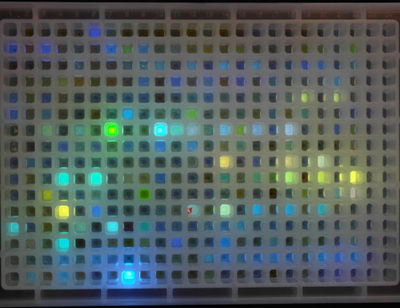
The Rauh Lab Compound Library comprises about 38,000 chemical entities (01/2019). The majority was purchased from commercial vendors, primarily from ChemDiv, Enamine, and Edelris. However, the collection is continuously enriched with compounds synthesized within our group or by collaboration partners. All compounds can be efficiently screened employing the versatile Robotics-Assisted Screening Platform for Efficient Ligand Discovery (RASPELD). Our screening facility was optimized for both biochemical and cellular screening campaigns. Reasonable hit rates and high reproducibility best exemplify the overall excellent assay robustness and high screening quality. The high-end technical equipment (ECHO acoustic liquid handler, MultiDrop bulk liquid dispensers, HTS multimode plate readers) minimizes the actual hands-on time and provides a straightforward-to-operate and powerful screening platform.
Proteinexpression
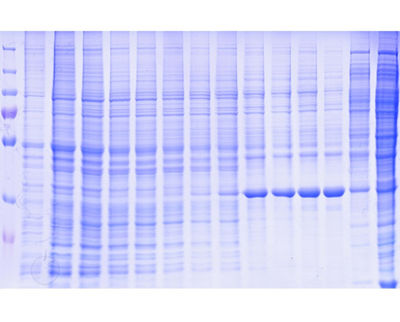
For the production of clinically relevant target proteins, we employ the baculovirus expression system in insect cells. This system enables the expression of complex and posttranslationally modified human proteins. The expressed and modified proteins are subsequently purified and readily available for the group's established assays technologies, protein crystallization and other experiments such as SPR and ITC.
X-Ray Protein Crystallography

Knowledge of the mode of binding of small molecules to a target protein allows a structure-guided optimisation to further increase their potency for a given target. X-Ray Crystallography is an essential tool in the Rauh lab to characterize and understand this mode of binding, thus allowing to speed up the whole process of optimisation and design of small molecule inhibitors for various target proteins.
Data Analysis
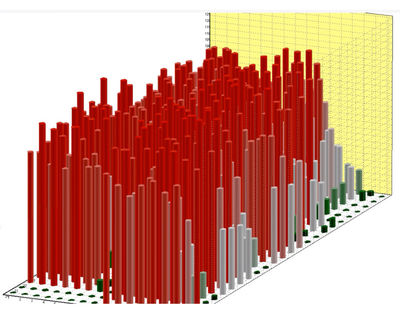
Large datasets generated with our RASPELD screening unit require tools for data analysis. We mainly utilize the assay analysis and validation tools integrated in the Quattro software suite. Additionally, we have a set of different software available for data analysis purposes, such as OriginPro, GraphpadPrism and Knime. Especially Knime is used to extract parameters such as bioactivity data, molecular weight, clogP and other important characteristics of the compounds from our compound library.
ECHO
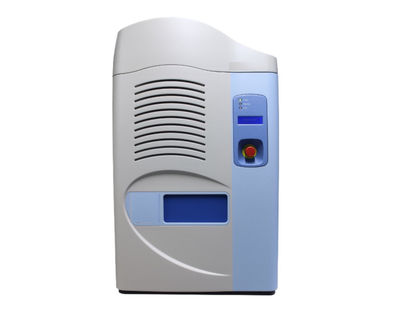
The ECHO 520 liquid handler (LabCyte) is a crucial component of our screening facility which allows for contact-free compound transfer. It is used in the biochemical as well as in the cellular setting either for screening purposes or in the regular evaluation of newly synthesized compounds. Therefore, the device is compatible with standard assay microplates (96- to 1536-well plate format) and can transfer volumes of 2.5 nL up to 75 nL. In the screening setting, the ECHO is mostly used to transfer a single compound concentration which takes in case of a 384-well plate about 4 min and allows a fast, robust and time-efficient screening of our whole compound library. To determine the inhibitory potency of newly synthesized ligands, we generate compound dilution series with the ECHO liquid handler and can transfer dilution series of 22 compounds in 10 min.
Surface Plasmon Resonance
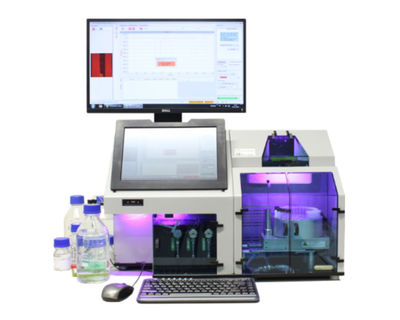
Surface Plasmon Resonance (SPR) spectroscopy represents an efficient technology to monitor (bio)molecular interactions under real-time and label-free conditions. Most importantly, corresponding affinities can be quantified by determination of the characteristic rate constants (kon, koff) and the thermodynamic dissociation constant (KD).
In the Rauh Lab, we use SPR imaging as a platform to validate a diversity of different biological binding partners. For instance, kinases and small molecules (inhibitors), transcription factors and DNAs, as well as protein-protein interactions are routinely characterized. Those studies are enabled by a variety of immobilization protocols, e.g. using tris-NTA, and monitoring of multiple SPR regions of interest on a single sensor.
Plate Reader
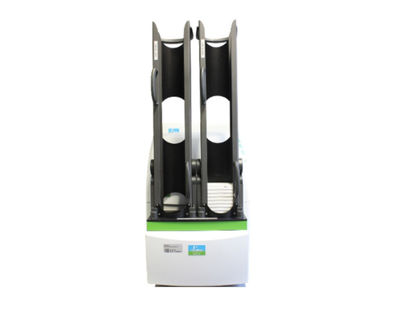
Two plate readers, the Infinite M1000 (Tecan) and the 2104 EnVision (PerkinElmer) allow for flexible, sensitive and fast readouts covering absorbance, fluorescence intensity (FI), fluorescence polarization (FP), time-resolved Förster resonance energy transfer (TR-FRET), and glow, flash, and dual luminescence measurements. Both devices are compatible with standard assay microplates (6- to 1536-well plate format) providing the capacity for assay miniaturization (≥ 5 µL assay volume) and medium- to high-throughput screening endeavours.
Mass Spectrometry
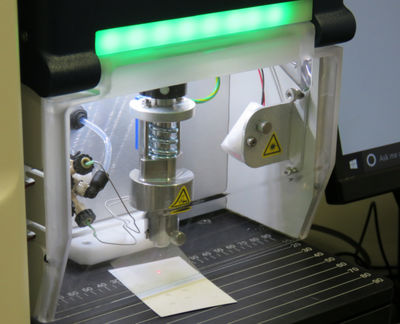
Modern mass spectrometry technologies provide a rich resource of various applications for chemical biology and medicinal chemistry research. In this highly interdisciplinary field, the applicability extends from the analysis of purity and identity of synthesized small molecules and expressed proteins until complex proteomics and metabolomics studies. In particular, studying the binding mode of potential covalent inhibitors places high demands on MS technologies. Therefore we use LC-MS systems with the most advanced ion trap technology for a high-standard and high-throughput analysis. A special feature is provided by our high-performance TLC-MS, which allows the immediate mass investigation of TLC plates as well as the preparation-free analysis of solids, liquids, and solutions.
Cell Culture
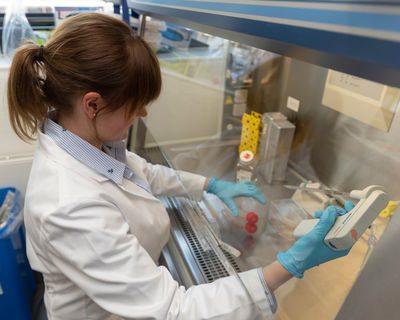
The cultivation of different types of mammalian cell lines in our cell culture lab offers the possibility to evaluate the effect of our compounds in diverse cellular model systems. These cellular models comprise for instance cancer cell lines derived from various tissues like breast, endometrium or lung harboring different genetic lesions. Herein, we predominantly focus on investigating compound-induced cell growth inhibition by performing the CellTiter-Glo luminescent cell viability assay and the compatibility with our RASPELD screening facility enables the cellular screening of thousands of compounds. Furthermore, the validation of intracellular target inhibition and selectivity is analyzed with western blot studies.
Compound Library
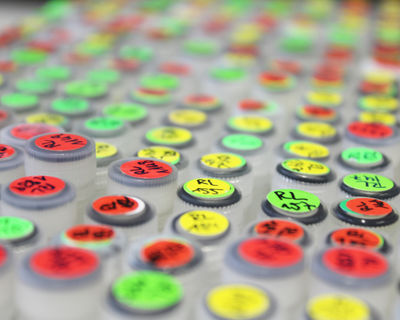
Our inhouse compound library comprised about 35 000 chemical entities. The majority was purchased from commercial vendors, like ChemDiv, Enamine and Edelris, however, it is enriched with compounds synthesized in our lab and by cooperation partners. Inhibitors that exhibit more drug like properties as well as natural products, peptides and polymer-bound compounds are included. The library was selected to cover a large chemical space and exhibits a broad distribution of molecular weight. Furthermore, we included a set of sp3-rich compounds to yield compounds with complex 3D-structures.
Quattro Database

Lots of compounds and respective assay results are generated in our lab every day. In order to manage these informations and bring them in a useful context we use the Quattro database as a powerful system for these purposes. It is a fully integrated database for compound registration, compound management, and assay management. Furthermore, lab journals and tools for assay analysis are provided and it enables seamless exchange of informations between collaboration partners within a project.

